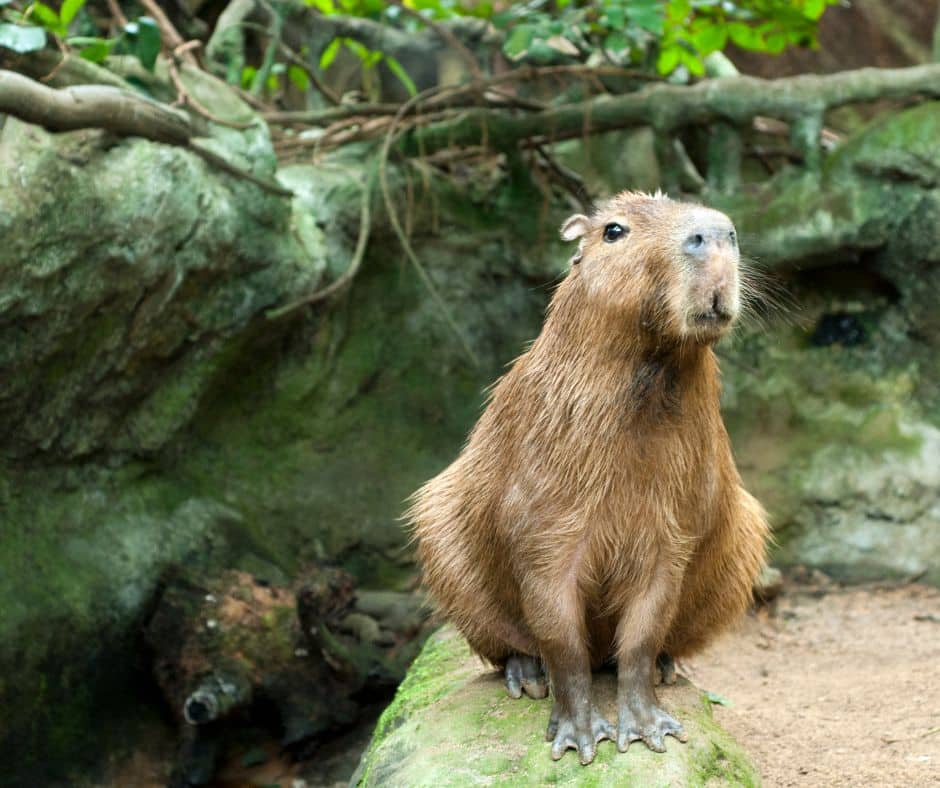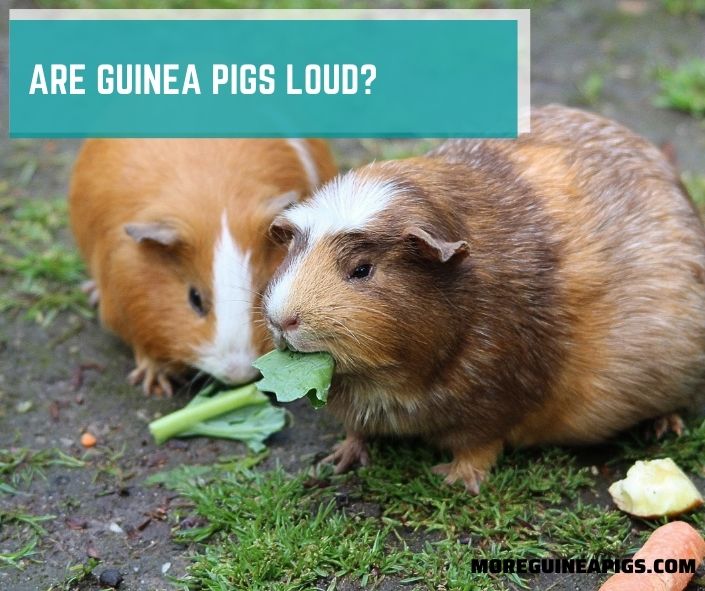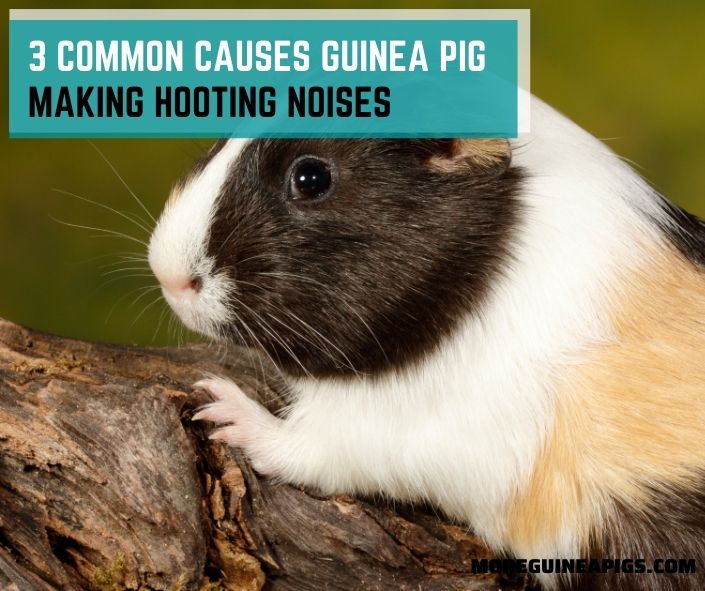Guinea Pig Size Guide With 4 Factors You Must Know
You might be wondering what the typical size of a guinea pig is. Also, there is confusion revolving around the reasons that affect the size of your pigs. Many pet owners are still unknown about the proper size guides of their guinea pigs.
In addition, you might be one of the pet owners worried about the size of your pigs. Questions like if your guinea pig is overweight, underweight, or normal may revolve around your head all day long.
Furthermore, you won’t have to worry much about the guinea pig size, and this article will provide you with all the necessary information and guides regarding guinea pig size. So, without further a due, let’s get started.
Guinea Pig Size Guide

Now we’re going to shine light upon the size of guinea pigs. They belong to the rodent family with an average size bigger than rats and mice. Your guinea pig will keep growing for about 14 months as it matures.
During birth, guinea pigs pups are only about 3 to 4 inches long with 60 to 120 gm of weight. As the pigs become eight weeks old, they measure 15 to 20 cm and weigh about 180 to 240 gm.
As they are 16 weeks old, their weight becomes 360 to 480 gm with length up to 20 to 25 cm length.
On average, a fully grown guinea pig will be 20 to 30 cm (8 to 12 inches) long and will have 1000 to 1200 gm weight. Capybara is the only cavy rodent species bigger than guinea pigs in size comparison.
How Big Do Guinea Pigs Get?
Guinea pigs will fully become adults by 14 months of age, and they will grow very slowly and gradually after reaching adulthood. Another thing to keep in mind factors regarding the size of guinea pigs is health, genetics, diet, and many more.
The largest guinea pigs belong to the breed Rex guinea pigs, and they grow up to 17 inches on average. And talking about more miniature pigs, American guinea pigs are known as smaller pigs on average size from 8 to 9 inches.
Growth Rate of Guinea Pigs Male guinea pigs tend to grow bigger than female guinea pigs. Usually, they grow up to 6 months of their age with rapid growth up to 14 weeks. After this period, guinea pigs will grow slower.
The growth rate of guinea pigs is rapid for the first four months. They double their size from birth to the second month of age, reaching up to 240 gm and 8 inches in length.
Also, they grow significantly from the second to the fourth month of their life cycle, reaching up to 10 inches and 480 gm.
Typically guinea pigs are considered adults after the age of 6 months. They grow from 4 to 12 inches during their life cycle and weigh from 120 to 1200 gm.

When Do Guinea Pigs Stop Growing?
Most guinea pigs in normal conditions stop growing in noticeable amounts after they reach the age of 14 weeks, which applies to both male and female guinea pigs. Until and unless there is any type of abnormality, they might grow beyond their adulthood.
4 Factors Affecting Guinea Pig Size
Various factors affect the size of guinea pigs. In this section, we are going to discuss them. As a guinea pig owner, you might be keen on knowing these reasons:
- Number of Pups
- Gender
- Different Breeds
- Health and Diet
Number of Pups
This might be a pretty strange reason that affects the size of guinea pigs. But the number of pups is a crucial factor. If your guinea pig is pregnant with many pups at once, the sow is quite crowded.
As all the pups have to share the limited space, they come out smaller than usual during birth.
Gender
There is a difference in size due to the gender of the pigs. The males tend to grow slightly larger, faster, and longer than the females. The difference is noticeable in many cases, the weight differs from 200 to 300 gm.
Different Breeds
Also, the breed of the guinea pigs affects their size. The size of the guinea pigs is highly influenced by genetics.
Rex guinea pigs are the largest breed of guinea pigs. They are also called lap guinea pigs. A fully grown Rex guinea pig can measure up to 17 inches, and it is one and half times longer than an average guinea pig.
However, American guinea pigs are the known most miniature guinea pigs breed. They measure around 8 to 9 inches as an adult.
Health and Diet
Like other pets, the size of the guinea pigs is also dependent upon the health and diet of your pigs. Your adult pig is underweight if its weight is less than 900 gm if male and 700 gm if female also if they are above 1000 gm (female) and 1200 gm (male).
More than 90% of the diet must contain the hay for a healthy diet. You can feed them 1 cup of vegetables and fruits every week. Also, you can provide their eggs in small amounts and cooked rice sometimes.
Kaytee All Natural Timothy Wafer-Cut Hay for Rabbits & Small Animals
How To Know If Your Guinea Pig Is Underweight
The best way to know that your guinea pig is underweight is by measuring them. You can easily see and feel their rib cage, bones, and spine if they’re skinny. These reasons can be typical to severe considering the rate of weight loss.
However, you can make some changes to help your guinea pig gain weight. The first thing you can do is provide them with an unlimited amount of hay to improve their diet. Also, you can supply them with fresh vegetables with enough supply of vitamin C and other supplements.
How To Tell If Your Guinea Pig Is Overweight
You might need a scale and average weight data of guinea pigs. You can timely measure and monitor the weight of your guinea pig. Using a sale is a good idea, and weekly weighing and keeping track of your pig’s weight is good.
On average, a healthy male weight is 900 to 1200 gm, and a female’s weight is 900 to 1200 gm. Generally, your pig is overweight if about 15 to 20% above the normal average weight.
You cannot distinguish between the pigs’ ribs, hips, and spines. Also, hands-on experience is another way to find if your pig is overweight. You can feel its big belly and not see its feet while standing up.
You can make healthy changes in your pig’s diet to lose weight. In addition, giving your pig sugar-free and fat-free food is a good idea. Also, a good playing and grazing space will allow your pig to have a lot of exercise and movement.

How to Measure Guinea Pig
Like other pets, weight is the essential factor to be considered. It can be a bit of a challenge measuring the weight of your guinea pigs. They do not want to stay in the same place for a long time, continually moving.
Use this technique to measure them. Place them on a scale with some form of base and distract them with a treat or toy. Make them feel comfortable and safe so that they stay on the scale. Take them away after you complete your measurement.
Guinea Pig Size and Cage Size
If you’re someone who keeps your cavy in a cage, then you must be extra careful while choosing the appropriate cage size. A spacious and big cage is a good place for your pig as it has a lot of room to play, graze and move.
In general, the size of the guinea pig cage will depend more on the number of guinea pigs than on their size. It’s always a good idea to have multiple pigs in a big cage. An area greater than 10 to 12 square feet is adequate for two pigs.
One of the first things you’ll notice when shopping for a cage for your guinea pig is that they come in a variety of sizes and shapes.
The most common materials used in building the cages are plastic, timber, pine boards, iron wire, and many more. Single-tier, two-tiered, and three-tiered hutches are available.
Depending on your needs and budget, you can choose from single and double-story cages.
Conclusion
Taking good care of your guinea pigs is crucial if you become a responsible pet owner. We tried to cover all the factors and necessary information regarding the size of your guinea pigs. At last, we hope this article has helped you understand the dimensions of your guinea pigs.







